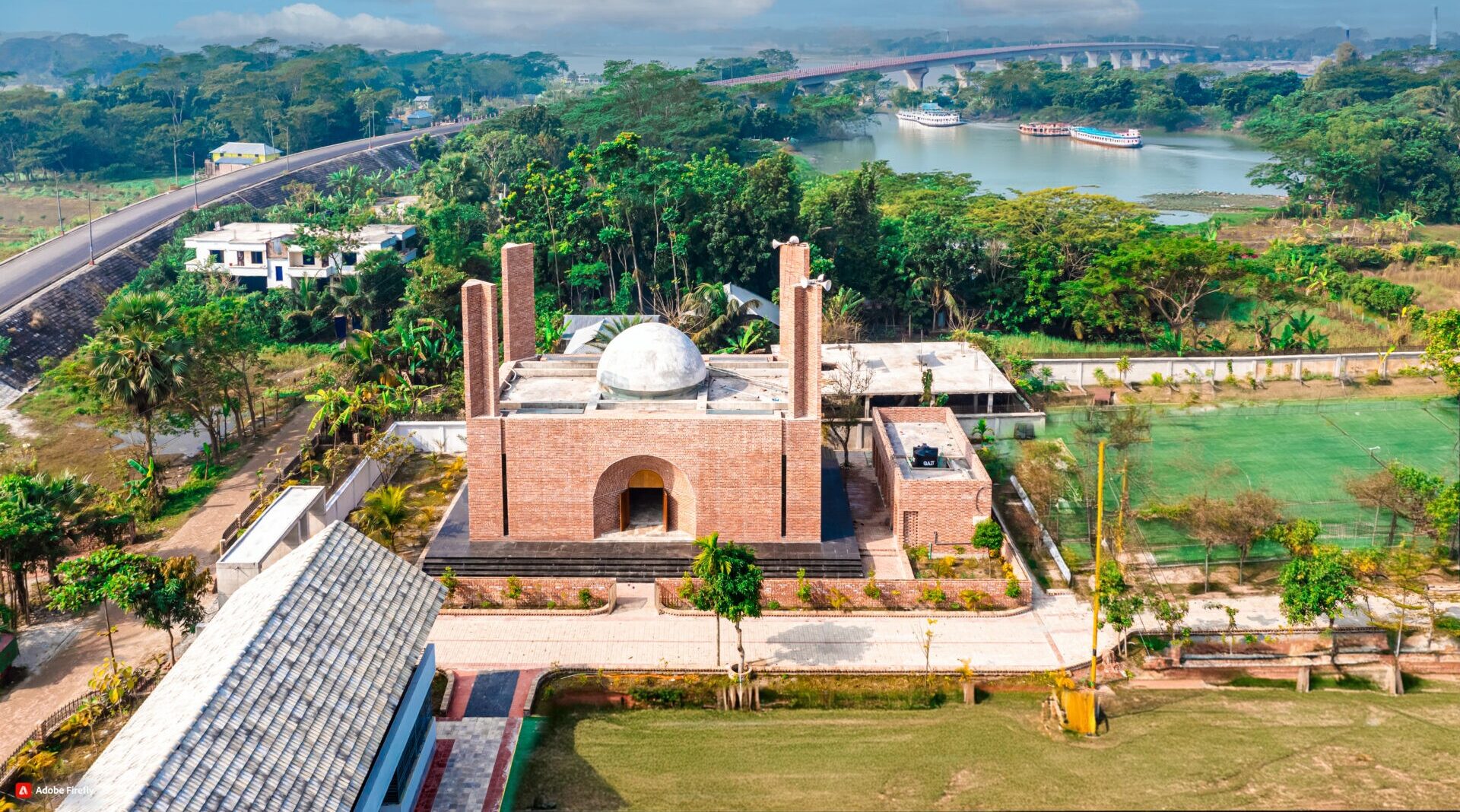Abstract Semiotics in Traditional Mosque Design : Nestled quietly on a rural site near the majestic Arial Kha River in Bangladesh, Bait-Ur-Raiyan stands as a testament to the profound interplay between symbolism and geometry in Islamic architecture. This small-scale mosque is an exploration of abstract interpretations of traditional Islamic architectural symbols, rendered through a human-centric approach that harmonizes spiritual space with community needs.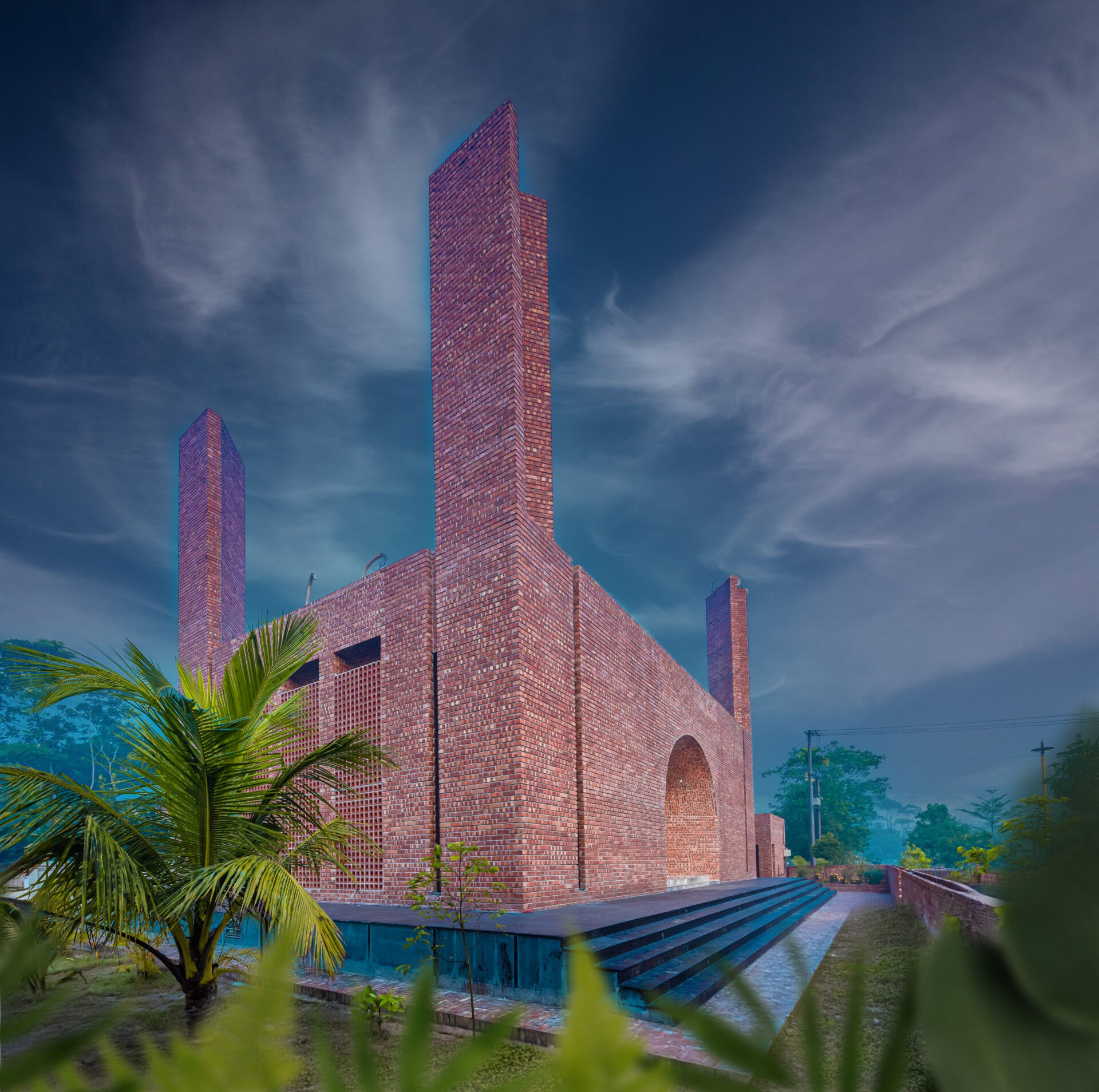 In Islamic art and architecture, symbolism is often conveyed through geometric abstraction rather than literal representation. This principle guided the design of Bait-Ur-Raiyan, where traditional elements like the dome, minarets, and arch have been reimagined through the lens of “Abstract Semiotics.” The result is a structure that embodies the sacred while maintaining an intimate scale, deeply rooted in the philosophy and way of life that informs Islamic design.
In Islamic art and architecture, symbolism is often conveyed through geometric abstraction rather than literal representation. This principle guided the design of Bait-Ur-Raiyan, where traditional elements like the dome, minarets, and arch have been reimagined through the lens of “Abstract Semiotics.” The result is a structure that embodies the sacred while maintaining an intimate scale, deeply rooted in the philosophy and way of life that informs Islamic design.
The mosque’s dome, a floating structure that invites daylight into the interior, offers worshippers a sense of the vastness of the sky, enhancing their spiritual experience. The minarets, rather than being conventional towers, are sculptural elements that ascend toward the heavens, symbolizing the aspiration of the human spirit. The entrance, transformed from a typical arch into a volumetric form, invites worshippers into a space of tranquility and reflection.
“This single storey mosque, with its lofty height, offers an experience that transcends the physical, engaging worshippers through spatial quality, touch, and vision.
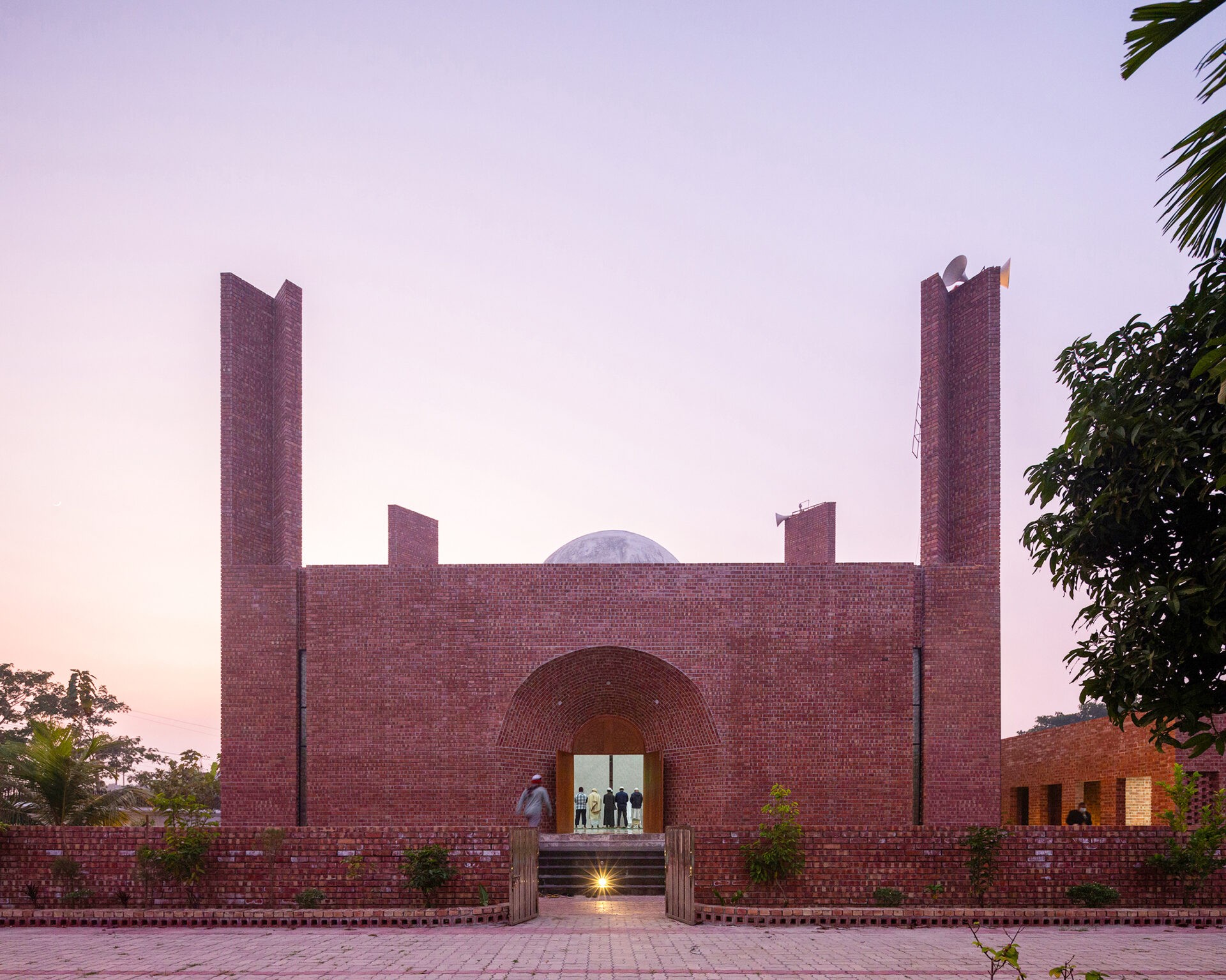 Abstract Semiotics in Traditional Mosque Design
Abstract Semiotics in Traditional Mosque Design
At the heart of the design is a simple rectangular volume, representing stability and creating a sacred yet intimate environment. This single-storey mosque, with its lofty height, offers an experience that transcends the physical, engaging worshippers through spatial quality, touch, and vision.
Timeless materials like red brick and stone, reminiscent of Bangladesh’s mosque heritage, have been used to construct Bait-Ur-Raiyan. The deep red brick contrasts with the lush greenery of the surroundings, while marble floors cool and porous provide comfort during the intense summer heat.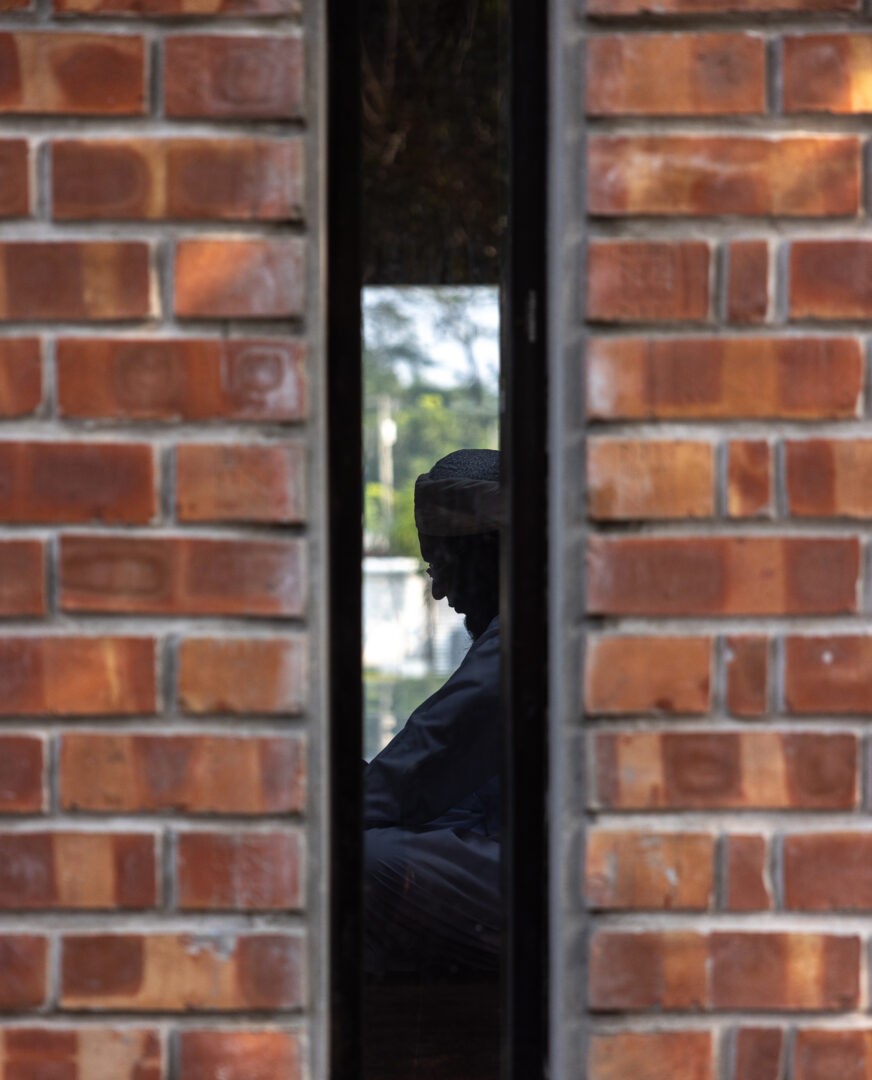
Light, an essential element of the design, is not merely an environmental consideration but a building element that enhances the spiritual ambiance. Daylight filters through apertures on the North and South sides, with additional indirect lighting washing over the walls and dome, elevating the mosque’s spiritual presence.
Read More: Modern and Victorian Style By Frame in
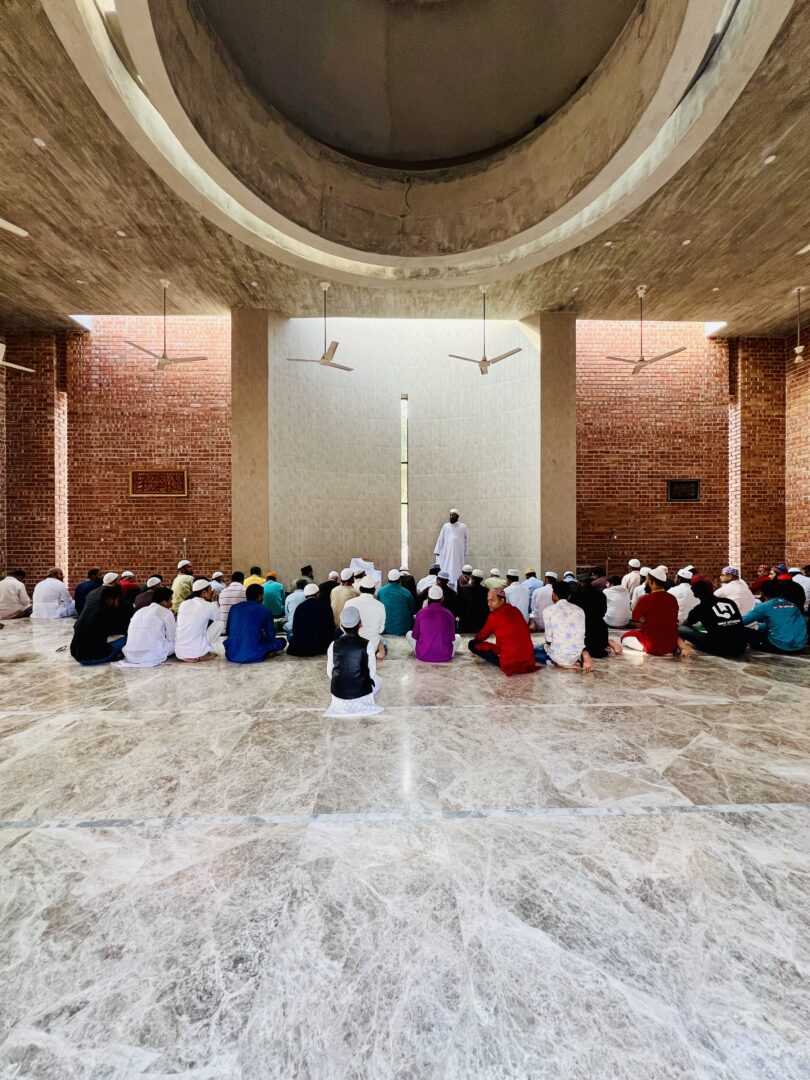
Bait-Ur-Raiyan, while designed for Friday congregational prayers, remains a serene space throughout the week. It relies primarily on natural ventilation and cooling, minimizing the need for mechanical systems and reducing operational costs. The abundance of natural light and air, enhanced by strategically placed skylights, ensures that the prayer hall remains well-lit and ventilated, fostering a contemplative atmosphere.
In Bait-Ur-Raiyan, traditional mosque elements are not merely retained but reinterpreted, creating a space that is both timeless and contemporary, sacred and community-focused.


